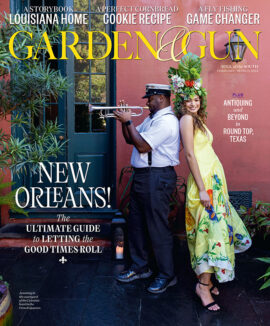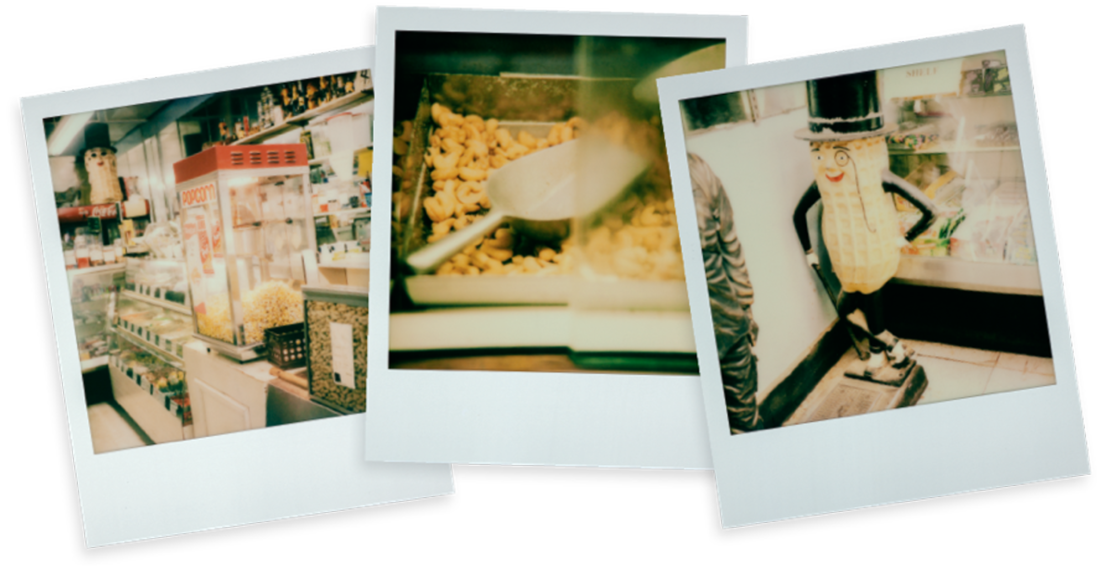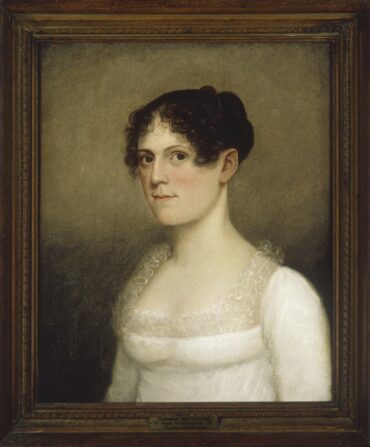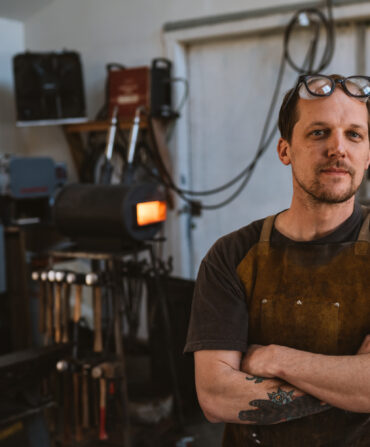Forty-five years after leaving my hometown of Mobile for college, I still find it astounding that I never lived there again. My grand life plan got waylaid by career (sportswriting) and spouse (Yankee). I soothe my yearning for home by telling myself that the Mobile I miss exists only between my ears. Time has a way of moving things along.
I tell myself that, and yet on every return trip, I walk into the peanut shop and see where time has been told to take a hike.
The official name is A&M Peanut Shop, yet four generations of Mobilians have simply called the narrow Dauphin Street storefront “the peanut shop.” Since 1947, when the store opened as one of hundreds of Planters retail stores across the country, the peanut shop has sold nuts, chocolates, popcorn, and soft drinks. For my generation and our heirs, A&M also offers its most desirable product—a sense of place, preserved not in amber but in the intoxicating aroma of roasted peanuts. Most downtown peanut stores have shuttered, although a few in the South—in Memphis; Nashville; Charleston, West Virginia; and my hometown shop—live on.
Carol Hunter of the Downtown Mobile Alliance says visitors to the city usually ask three questions: “Where should we eat? What attractions should we visit? And where’s the peanut shop? The peanut shop is the only specific location that people ask to find.”

Dauphin Street as a retail district dried up and blew away in the 1970s. Dauphin Street as an entertainment district came alive in the 2000s. And through it all, for seventy-five years, the peanut shop has thrived without changing much of anything. In fact, remove the handwritten price placards out of the three glass display cases, and I defy you to tell me what year it is. Just inside and to the right of the front door is the store’s original cast-iron roaster, with “Planters Nut & Chocolate Co.” molded in script. On the counters are two antique scales, needles instead of digital readouts displaying the weight. A Mr. Peanut papier-mâché costume rests atop the self-serve drink refrigerator, and in the corner sits a Mr. Peanut penny scale. Neither is employed by the store any longer, but they hang around the way that so many customers do. “It’s like a barbershop,” says the owner, Buzz Jordan, a local attorney.
“Our customers become friends, and then family,” Deborah Gibson DeGuire says. Her parents, Alfred and Mary Gibson, are the “A&M” in the name. Planters transferred Alfred to Mobile in 1949 to manage the store. Soon after Planters got out of the retail business in 1961, Alfred bought the place and renamed it, running it until he died a couple of decades ago. Then DeGuire ran it until selling to Jordan in 2018. He kept her on for her institutional knowledge, and because she is an institution. The shop has been her life.
“I was almost born here,” DeGuire says, chatting at a picnic table on the sidewalk outside the store. “Mom was here and Dad put her in a cab and sent her to the hospital.” DeGuire began waiting on customers when she was old enough to reach over the counter. These days she comes in to make peanut clusters, coconut haystacks, and other confections, sitting in her shirtsleeves in the refrigerated storage area.
“There are a lot of people who love Debbie,” says Beth Morrissette, her friend and a devoted customer.
I mention that because after we talk, Morrissette messages to tell me, “The next time you visit family, you need to go buy some hot buttered cashews.”
But I stick with the original—peanuts, roasted and definitely unsalted. This preference is considered odd in my adopted Northeast, but I come by it naturally. Among my earliest memories are Saturday mornings when our housekeeper would arrive at our home with a copy of the Sporting News, then a weekly newspaper, and a white bag with the blue-and-yellow Mr. Peanut insignia, still warm to the touch. According to family lore, that’s how I learned to read, sitting on Rosa Lee’s lap, eating peanuts.
Ask Mobilians of a certain age about the peanut shop. Their faces soften and their eyes look to a distant memory. It may be Mr. Peanut standing in front of the store, handing out samples. It may be going downtown to shop for an Easter dress and bonnet, with a visit to the peanut shop being contingent on good behavior.
City councilman William Carroll, whose district includes downtown, remembers his father and grandfather sitting on the back porch, eating A&M peanuts. After college, Carroll and his fraternity brothers would gather every Friday night. “We had one individual,” Carroll says, “whose job it was to go by the peanut shop every Friday and get three large bags to have at the Kappa house in order to have a few peanuts with libations.”
A half block from the peanut store sits Bienville Square, the unofficial center of downtown. The square includes a gazebo, wrought-iron benches, sixty or so oak trees, and squirrels that, like so many others these days, come downtown for the cuisine. Generations of children and their grown-ups have been buying peanuts at A&M and walking up to the square to hand-feed the residents. “Rotund” is one description of the squirrels. “Too many” is another. The overpopulation has caused city officials to fear for the health of the oaks, which suffered significant damage from Hurricane Sally in 2020. Earlier this year, the city engaged a wildlife service to trap twenty-five squirrels and relocate them to rural Mobile County.
A few years ago, the dilemma inspired the local arts council to create the Mystic Squirrels of Bienville as an informal Mardi Gras fundraiser. The Mystic SOBs, as they call themselves, march in the Joe Cain Procession, also known as “the people’s parade,” on the Sunday before Mardi Gras. The Mystic SOBs wear squirrel costumes, carry signs of squirrel puns (I LIKE BIG NUTS AND I CANNOT LIE), and throw small brown paper bags of A&M peanuts. The store does 20 percent of its annual business during the two-and-a-half-week parade schedule. “Mardi Gras is our Christmas,” DeGuire says.
The downtown Dauphin Street I see when I return to Mobile remains in transition. Here is the Thom McAn shoe company trademark script, still in the entryway of a vacant storefront. There is Southern National, which the New York Times named one of the fifty best restaurants in the nation. Between the two, by street address and in other ways, A&M is very much alive. The Cokes these days might come in twenty-ounce plastic instead of six-and-a-half-ounce glass, and the customers order the almonds, cashews, and Brazil nuts as health food. But I walk into the peanut shop and I step back to my Mobile, the one I have carried in my heart for forty-five years. The one where my uncle Herman, a gourmand of some renown, would come in from Chicago and demand to be taken from the airport to the peanut shop. The one where I could plow through a pound of roasted peanuts and consider that a snack. I can confirm that part of my Mobile is gone. On my last trip to the peanut shop, I ate a half pound of roasted and was full for hours. But I finished them before I made it back to the car. What can I tell you? The bag was warm.








